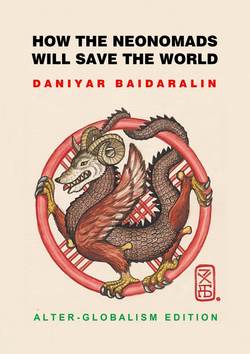Читать книгу How the Neonomads will save the world. Alter-globalism edition - Daniyar Z Baidaralin - Страница 11
THE CONCEPT: EURASIAN NOMADIC CIVILIZATION
Arts and crafts
ОглавлениеThe Eurasian Nomads were also proficient and prolific in arts and crafts. To put is simply, they tried to turn everything they touch into an art piece. Free of city walls and houses, not burdened by the need to cultivate the land or watch after the gardens, having only the most necessary possessions that their cattle can carry, most of the nomads didn’t have hoarding addictions of the SC people. Plus, unlike the later, they had tons of free time on their hands, and also never developed the division of labor to such a degree as it was in the settled societies. Therefore, they were much freer to engage in artful activities.
Each EN was crafty and skillful, and able to perform most of handwork tasks. All nomadic women were taught to sew, weave, and make felt. And all of the men had basic woodworking, leatherworking, and metalworking skills. Of course, there were exceptionally gifted craftspersons who could specialize in certain narrow process-oriented trades, such as yurt making, bow making, smithcraft, and weapon making, and it was considered a blessing from the Skies. But even the least talented nomadic man or woman could equip and decorate their yurt and make their own clothing.
Even the neighboring SC nations noted this quality of the nomads, not without some envy. On the average, the EN were skillful, versatile, resourceful and imaginative. The Kazakh yurt, fully decorated and equipped, is a masterpiece of the highest grade. Every square inch of it is decorated with textiles, weaved patterns, ornamented felts, beautiful rugs, bedding items, linens, and etc. The dressing was also decorated with embroidery or applied patterns. And most men knew how to make good looking leather goods that could be embossed or stamped; wood carving; or even metal jewelry. Much effort was spent on decorating the horse equipment: saddles, saddle pads, stirrups, harness, and etc. And, of course, men would go out of their way to make their weapons look good too, as the weapon was a sign of manly status.
The nomads wanted to live beautiful lives in accordance with their aesthetical views. They wanted their mobile dwellings to look and feel like home, and spared no efforts to achieve that. The nomadic mentality was simple: I don’t change the surrounding nature and I don’t have much possessions, but I do carry my home and my belongings with me all my life, and I want them to look real good.
